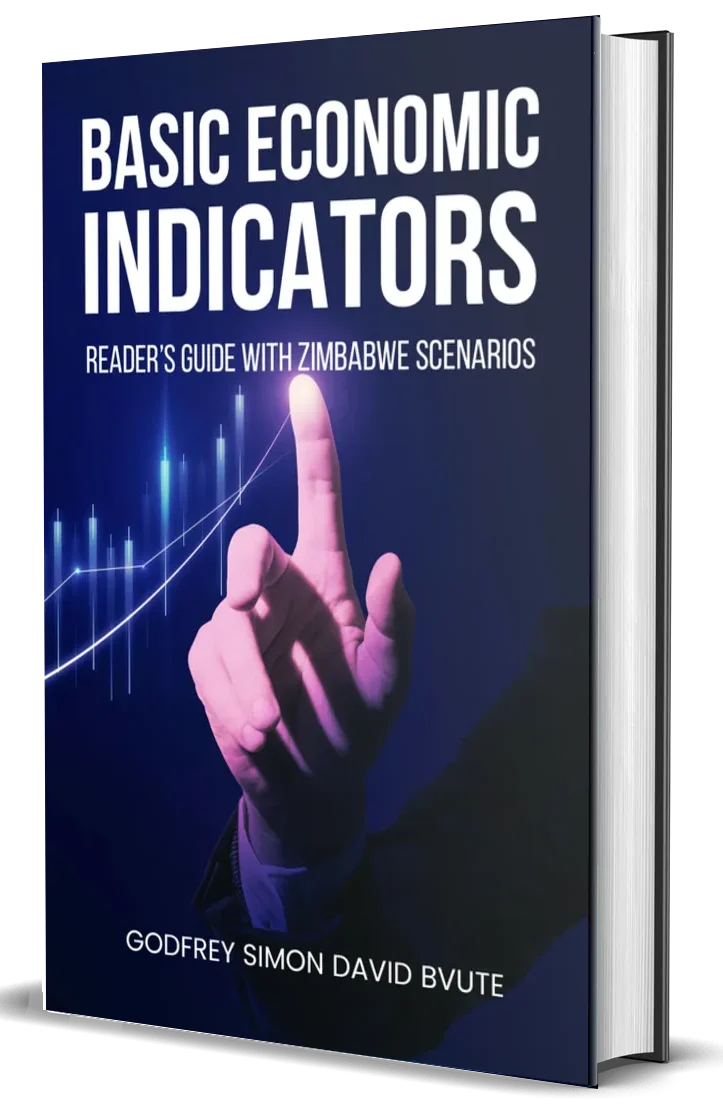The economy is often perceived as an abstract or complex system—something discussed in news headlines but not always understood at a practical level.

But economic indicators shape everything and have immense importance in our lives. From the prices of goods to job opportunities, inflation, and government policies, it is a core element to shape a country’s economic landscape.
In Basic Economic Indicators: Reader’s Guide with Zimbabwe Scenarios, Godfrey Simon David Bvute demystifies these concepts. By making them accessible to both experts and ordinary citizens, this book is for anyone who wants to understand how economic decisions impact daily life.
Right from the start, Bvute makes it clear why economic literacy is essential. He argues that a lack of understanding of economic indicators often leads to misinformed public debates, poor financial decisions, and, at the national level, misguided policies. Rather than relying on heavy jargon, he explains economic principles in clear and simple language, ensuring that even those with no prior background in economics can grasp the key ideas.
The book is structured around five key areas. This includes real economy indicators, monetary and financial indicators, public finance, international trade, and other economic metrics. Each of these sections builds upon the last. They offer a comprehensive guide to understanding economic performance and focus on practical application. While many economic textbooks provide theoretical knowledge, this book grounds in real-world scenarios, specifically within the context of Zimbabwe.
For instance, its analysis of GDP (Gross Domestic Product) explores how GDP growth—or lack thereof—has influenced Zimbabwe’s development over the years. It discusses the economic collapse of the 2000s, the effects of hyperinflation, and the challenges of rebuilding a stable financial system. By doing so, this book is able to transform economic indicators from abstract numbers into meaningful insights that explain the realities Zimbabweans face every day.
Moreover, inflation, a major concern for Zimbabwe, receives a detailed and insightful discussion. Bvute breaks down how inflation is measured, what causes it, and how it affects purchasing power. He further illustrates this by drawing on Zimbabwe’s economic history, including the notorious hyperinflation period that saw the collapse of the Zimbabwean dollar. This ability to link economic concepts with lived experiences makes this book not only educational but also deeply relevant.
Another standout section is his discussion of public finance. While many citizens may not understand how government budgets work or why national debt matters, Bvute simplifies these topics. For example, he professionally explains the role of taxation, government spending, and deficit financing, shedding light on why budget mismanagement can have long-term consequences. Bvute also discusses solutions. He offers suggestions for how Zimbabwe can improve its economic stability, emphasizing the need for data-driven policymaking, transparency, and better financial education for its citizens. He also believes that with the right approach, Zimbabwe can rebuild its economy and achieve sustainable growth in the future.
What makes Basic Economic Indicators particularly valuable is their ability to speak to multiple audiences. For example, policymakers will find it useful for understanding economic data, while students will appreciate its clear explanations. At the same time, business owners and investors can gain insights into financial trends, while ordinary citizens can learn how to navigate inflation, currency fluctuations, and market dynamics easily.
For anyone looking to understand Zimbabwe’s economy in a clear, structured, and practical way, Basic Economic Indicators is an indispensable guide. Bvute has successfully taken a complex subject and made it accessible, offering readers the power to interpret and respond to economic changes in their lives that will arm them with knowledge, showing them that economic indicators are tools that everyone can use to make better financial and policy decisions.
The book is available on Amazon for purchase: https://www.amazon.co.uk/dp/1779336632